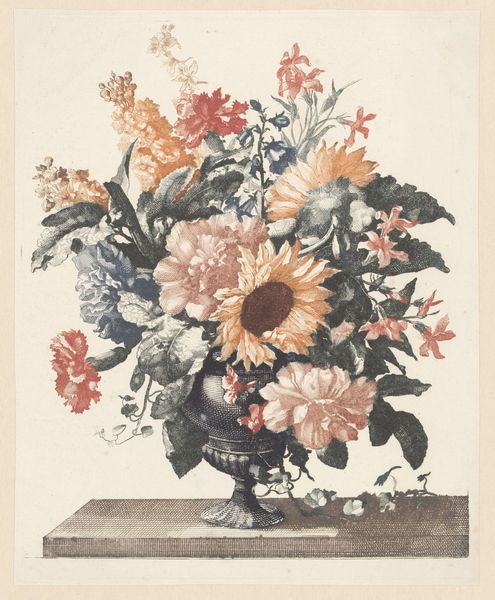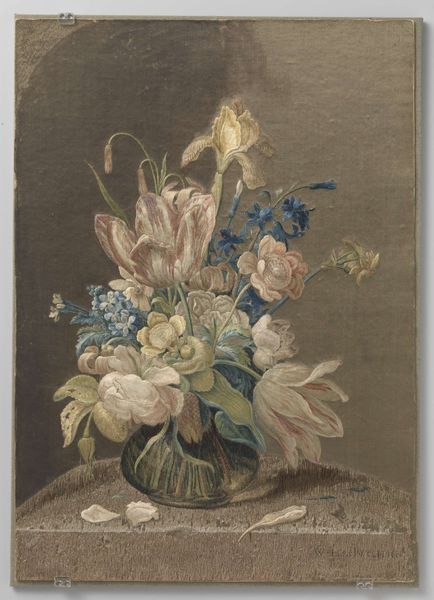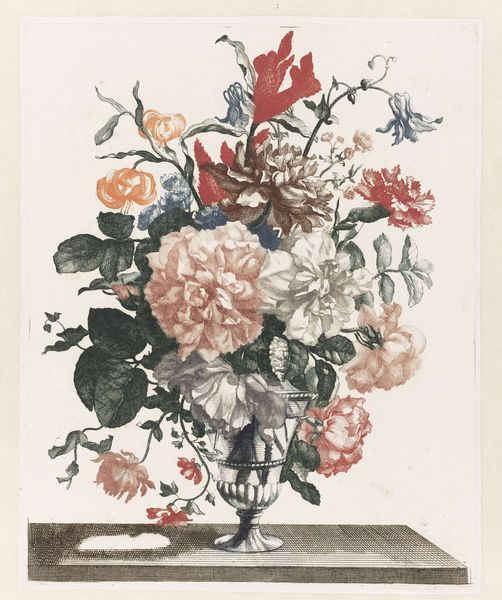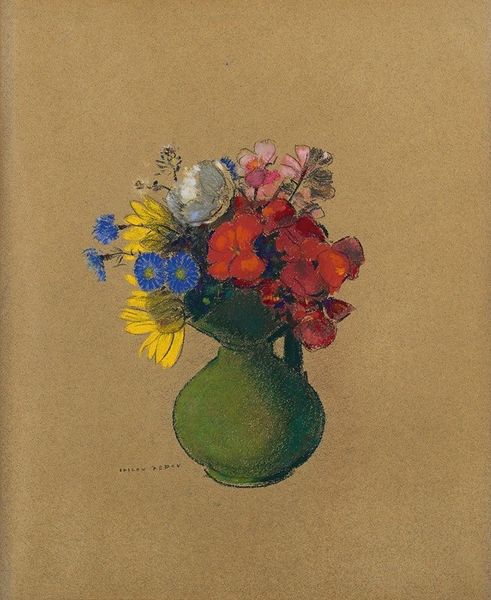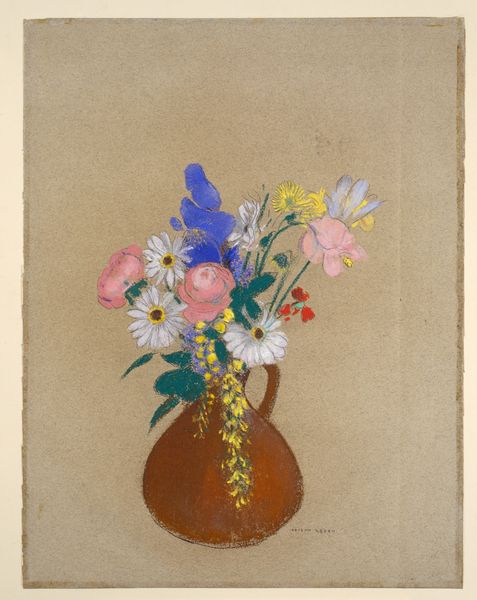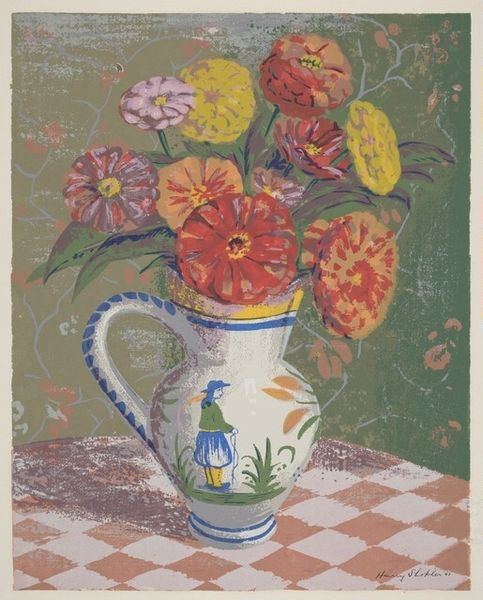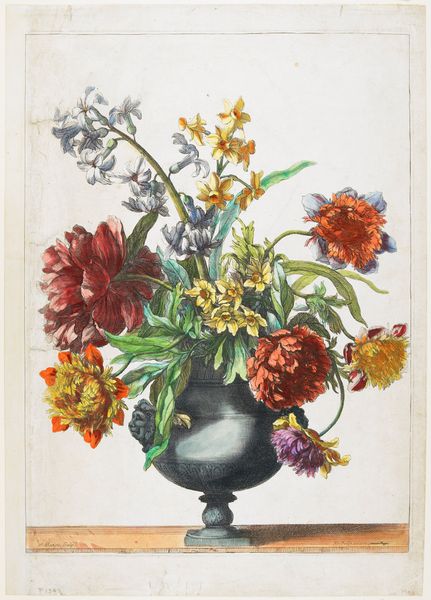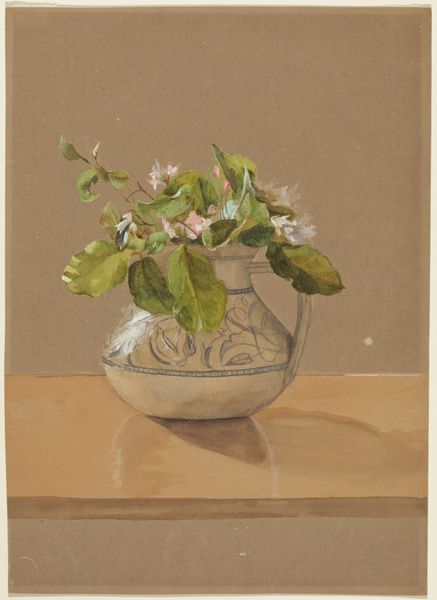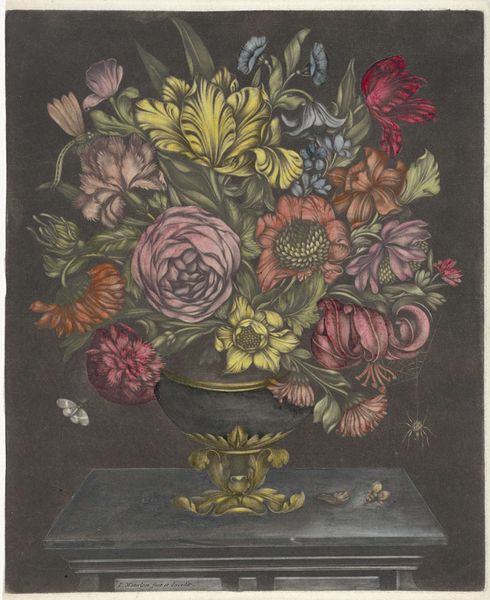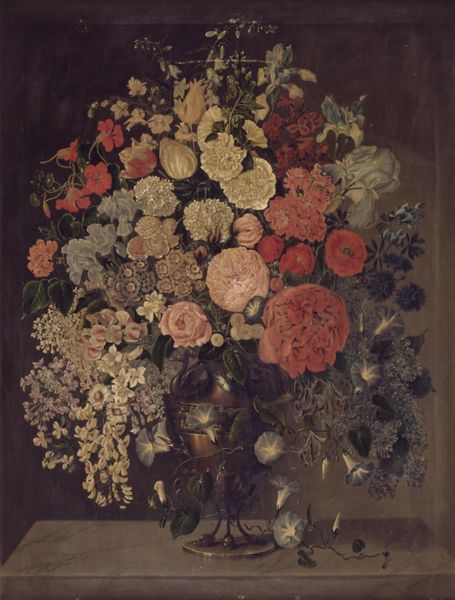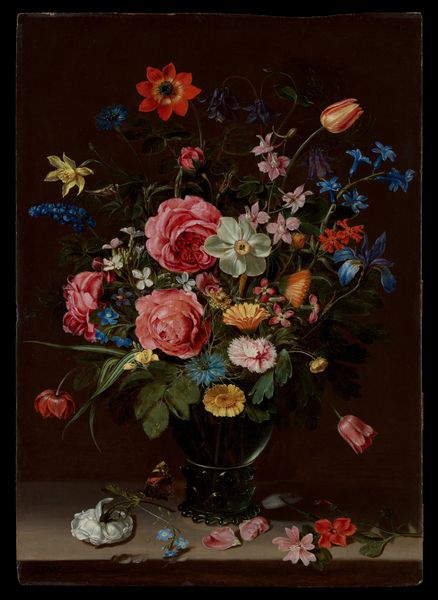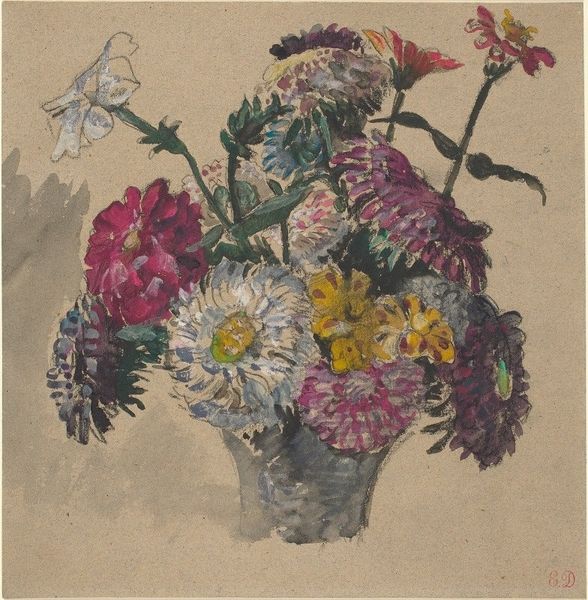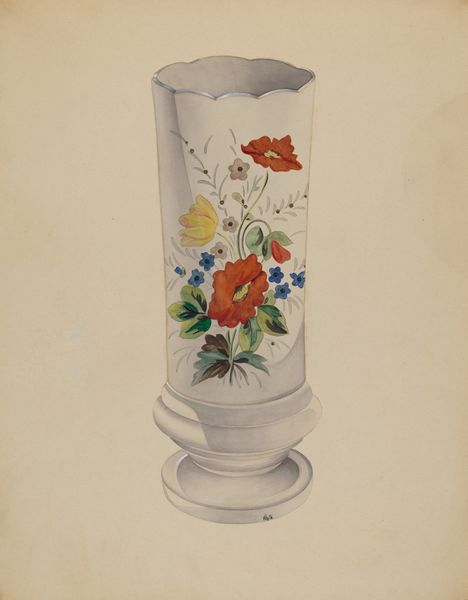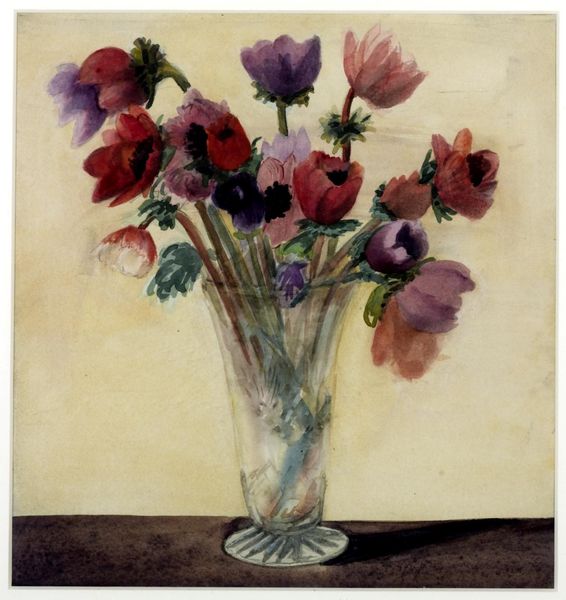
print, watercolor
#
art-nouveau
#
water colours
# print
#
watercolor
#
symbolism
Dimensions: image: 45.6 x 35.4 cm (17 15/16 x 13 15/16 in.) sheet: 45.8 x 35.9 cm (18 1/16 x 14 1/8 in.)
Copyright: National Gallery of Art: CC0 1.0
Curator: We’re now looking at Theodore Roussel’s “L'Agonie des Fleurs,” created around 1911 to 1912, using watercolor, and print mediums. The somber background really amplifies the delicate floral arrangement in a decorative vase. What’s your first take? Editor: Decadent. The mood is almost suffocatingly beautiful. The dim colors evoke a very strong emotional feel... It feels like time is just... pausing here, right now. How are the materials lending to the composition here? Curator: Precisely, the visual language employed establishes a powerful tension. The symbolism evident in the wilting blooms juxtaposed against the ornate, vibrant vase constructs a strong narrative about mortality and decay. I'd argue, too, that Roussel makes very interesting choices regarding composition, like drawing your eye along these almost imperceptible diagonals from the corners to the heart of the flower's details. Editor: And that vase! Look at those miniature figures emblazoned across it. Consider where that porcelain came from, how it was transported and traded, and the social networks that supported the artist in turn. How fascinating to witness the confluence of production, design, and consumption intertwined so intricately! The "agonie," or agony, seems very appropriate if we consider the many hands involved. It isn’t only about the agony of the flowers, I would posit. Curator: True, but the title itself encourages an almost allegorical reading, does it not? I'm fascinated by the contrast between the fleeting beauty of nature and the object’s enduring presence. But it’s hard to look away from that very clear symbolist angle in the actual form the arrangement is taking: the delicate color choice, even—it can be difficult to disentangle how those forces all gather on the flowers. Editor: Right! And those visual components cannot exist separately from the socio-economic dimensions that helped this creation come together. What does it mean to create "fine art" depicting still lifes such as these in this exact historical moment? Who gets to own such a thing, and why? All such things are embedded, right alongside the formal choices of color and composition, with just as much importance. Curator: I see your point regarding broader implications – an enriching way to reflect on this delicate watercolor piece! Editor: Agreed. This interplay is really wonderful. Let’s appreciate, finally, how the mundane, everyday objects are in conversation with bigger concepts like life, death, or ownership of goods.
Comments
No comments
Be the first to comment and join the conversation on the ultimate creative platform.
